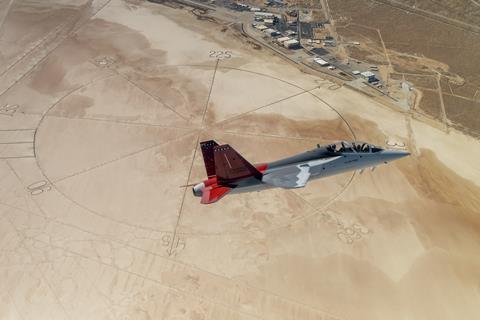Boeing will deliver the fourth T-7A Red Hawk jet trainer to the US Air Force (USAF) in February.
That marks a delay from the previous estimate of a December 2023 delivery for the latest example of the single-engined model.
The airframer says it shifted the handover date after quality control checks found components provided by a sub-contractor did not meet Boeing standards.

While Boeing did not specify which parts generated the issue, the aerospace giant confirms to FlightGlobal they had not been installed on the T-7A when the quality issue was discovered. T-7A tail numbers APT-4 and APT-5 are still undergoing assembly in St Louis, Missouri.
In contrast to production and manufacturing issues at Boeing’s commercial business, the company’s defence unit is portraying the T-7A incident as an example of the internal quality control process working as intended.
Boeing says the USAF will not be materially impacted by the multi-week delay, which also will not generate a penalty charge for the company.
The aerospace giant delivered the first Red Hawk to the air force last September: tail number APT-2. That jet later arrived at Edwards AFB in California for evaluations in November.
The company subsequently delivered two additional examples: tail numbers APT-1 and APT-3.
Boeing will provide the USAF with five examples of the T-7A for the jet’s flight-test programme. Those aircraft are being delivered in the engineering and manufacturing development configuration.
Assuming flight testing proceeds smoothly, Boeing plans to begin assembling production-model T-7A airframes in the second quarter of 2024.
The company’s St Louis plant will be capable of producing 60 Red Hawks annually, according to Boeing’s T-7 programme manager Evelyn Moore.
Boeing aims in the early months of 2025 to complete “Milestone C” – the point at which military equipment manufacturers are approved to begin low-rate initial production of new systems.


























